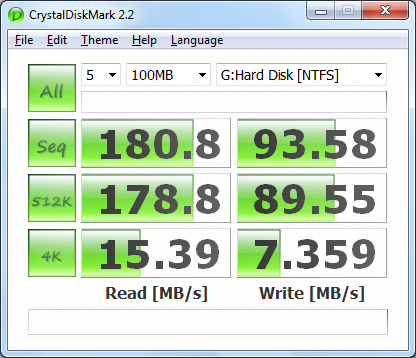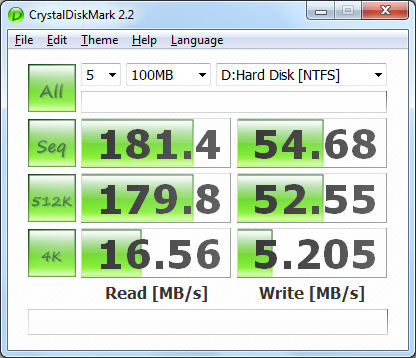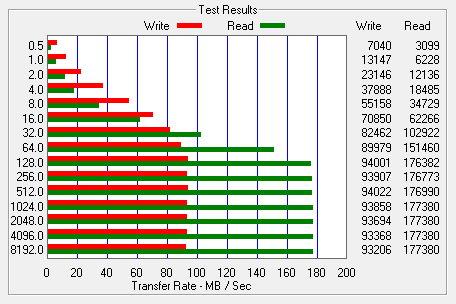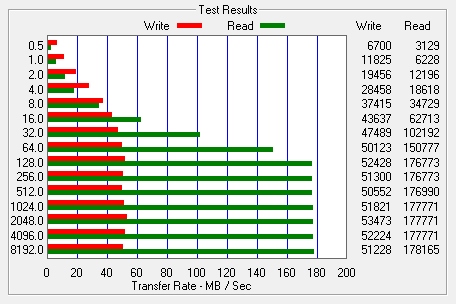The test system used in this review was an HP dc7900. The computer came equipped with an Intel Core 2 Duo E8400 3.0GHz CPU, 2GB of DDR2 800MHz memory, Seagate Barracuda 7200.10 ST3250310AS 250GB SATA hard drive, NVIDIA Quadro FX570 256MB PCIe graphics card and Intel 82567LM-3 gigabit network card. For the operating system, I installed a fresh copy of Windows 7 Enterprise.
To test the performance of the Plextor PX-128M1S, I ran a series of benchmarks using CrystalDiskMark 2.2, HD Tach RW 3.0.4.0, ATTO Disk Benchmark 2.02, HD Tune Pro 4.01 and Iometer.
CrystalDiskMark 2.2:
First, I ran a few quick tests using CrystalDiskMark. This benchmark tool measures the performance of a storage device by testing its sequential read and write speeds as well as its random read and write speeds using blocks 512K and 4K in size.
Out of the box, the PX-128M1S performed very well. The drive exceeded its rated speeds when both reading and writing. After a day or two of usage though, the SSD's write speeds dropped off considerably.
HD Tach RW 3.0.4.0:
Next, I used HD Tach to test the PX-128M1S's read, write and burst speeds as well as its seek times and CPU usage.
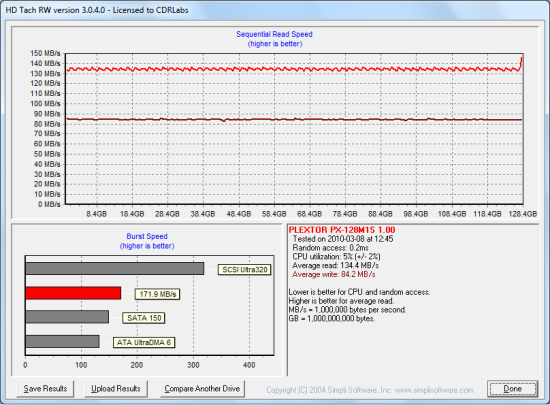
Plextor PX-128M1S - Clean

Plextor PX-128M1S - Dirty
Looking at the screenshots above, you can see that the PX-128M1S performed very well in its "clean" state. Unfortunately, after continued use, the SSD's average write speed dropped from 84 MB/s down to less than 50 MB/s.
ATTO Disk Benchmark 2.43:
I also used ATTO Disk Benchmark to test the PX-128M1S's sequential read and write speeds. The tests are run using blocks ranging in size from 0.5KB to 8192KB and the total length set to 256MB.
With the PX-128M1S in its "clean" state, the read and write speeds topped out at about 177 MB/s and 94 MB/s, respectively. The SSD was able to maintain these read speeds after continued use. However, its write speeds peaked at only 52 MB/s.


